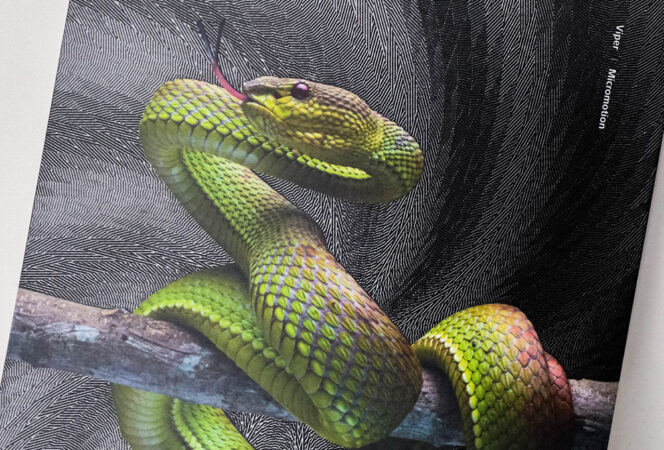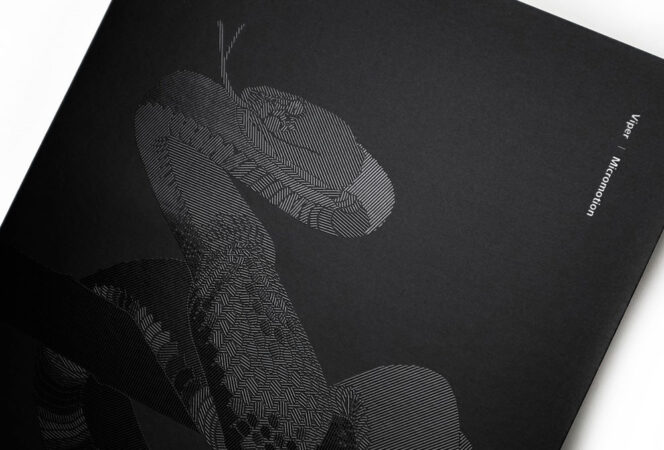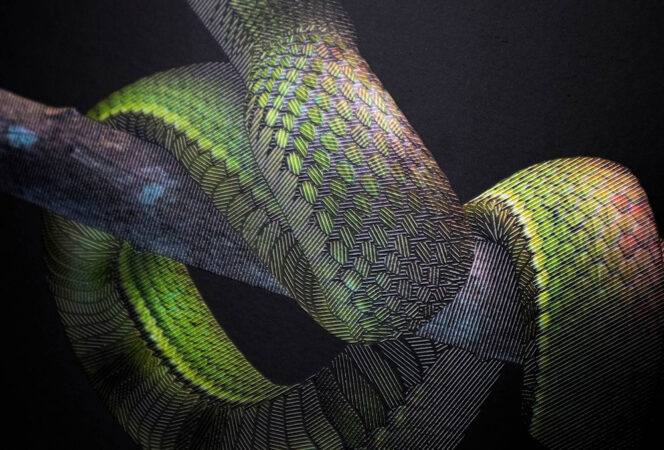The Finishing School
Micromotion: Adding movement to great design
Celloglas has long-championed lenticular finishing as a clever way to add dimension or motion to flat images. As well as simply providing an eye-catching element to print or packaging, its effects encourage people to pick up products and play with them to try and get a better understanding of them. In terms of marketing objectives, this specialty finish ticks many boxes. That’s why we’re excited to introduce Micromotion to our extensive catalogue of print finishing techniques. Here, we explain all about this effective print enhancement technology and consider how to use it to its best effect and create mesmerising materials.
What is Micromotion?

A visually striking patented technology, Micromotion brings the illusion of motion to printed graphics. Various patterns are used to create fine line work that gives you movement and subtle effect changes depending on the viewing angle. This unique, screen-printed method offers a tactile as well as visual experience to ensure users simply cannot resist engaging and interacting with the end product. When you print as a varnish, you’ll start to get movement because it diffracts the light. These brilliant effects are as a result of micro-printing parallel fine linear optical arrays over graphics so it controls reflected light and gives the illusion of movement. This makes Micromotion an ideal choice for any application for which you want to grab attention or make a statement – point of sale displays, magazine covers or packaging, for example. Micromotion is extremely versatile, with plenty of scope for creativity. The direction of its lines controls reflected gloss, allowing for dynamic matte to gloss to matte shifts – this change of direction creates flashes of reflected light.
Micromotion – the finer details and designer top tips
While Micromotion isn’t strictly lenticular, it does allow for playing with the idea of lenticular underpinning. Micromotion can be done flexo and printed on top of graphics. However, we recommend, in order to get the best results – precise detail and high quality – it should be screen printed. You can also alter the level and complexity of detail too. Rather than laying the pattern over the entire print, add Micromotion into smaller areas of the overall design. Incorporate changing angles of lines in different areas to give the ‘flash’ or curve the lines (but maintain parallelism) for even greater effect. Photomotion is the name given to the technique in which images or designs are broken up with different angles of Micromotion or when patterns are based on Photoshop grey scale of the original image for stunning shading effects that create movement. A greater angle change between adjacent patterns results in a greater ‘flash’.

For Micromotion screen printing on to normal substrates, the starting point is a line width of 0.008” with a 0.016” gap. Nanomotion, which is a 50% thinner line and 50% smaller gap, works best on laminates and high-gloss plastic substrates. The finer you take it, the better results you’ll achieve on a laminate. If using Nanomotion on an uncoated substrate, the motion effects are lost.
Micromotion works so well on packaging because you can take the pattern as big you like. You could scale up so it’s one large circle in the maximum print area. However, it’s not just a case of stretching it – you must be sure to keep the same size gap between the same thickness of line so as not to lose motion.
Achieving unparalleled end results
Micromotion and Nanomotion work best on dark colours and reflective surfaces such as foils or holographics. For a striking result for high-end packaging, consider using a black solid (like a foil) and add Micromotion but really focus on the different angles and smaller detail. Play with its various effects by printing ‘blind’ – don’t match it to an image or graphic and simply add Micromotion straight on to the substrate.
Micromotion isn’t suitable for pastel and lighter colours or photographic images – it won’t produce the desired effects.
Micromotion is a hugely effective way to add pattern and texture to any image or design and, whether it’s used for printed materials or packaging, communicates value, innovation and unrivalled creativity.
Want to learn more about the special effects of Micromotion and how this unique technology can set your brand apart from its competitors? Get in touch and we’ll advise on its endless possibilities.

